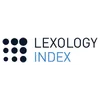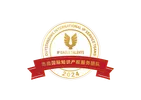Last week, the 2019 Nobel Prize in Chemistry was awarded to John B Goodenough, M Stanley Whittingham and Akira Yoshino for their work developing the lithium-ion (Li-ion) battery. In the words of the Royal Swedish Academy of Sciences, the lithium-ion battery has “laid the foundations of a wireless, fossil fuel-free society, and [is] of the greatest benefit to humankind”.
Increasing demand, finite resources #
Compared to other technologies, Li-ion batteries offer vastly improved energy density, no gradual loss of capacity over time (memory effect) and a low rate of self-discharge. However, the current technology is already over 30 years old — Yoshino developed the first Li-ion battery in 1985 using a cobalt oxide cathode developed by Goodenough. The cobalt oxide cathode/graphite anode system still has one of the highest energy densities among commercialised Li-ion batteries.
With huge growth in electric car production and renewable energy storage forecast in the next few years, the demand for Li-ion batteries will continue to increase. However, both lithium and cobalt are finite resources. In addition, cobalt is often mined in politically unstable parts of the world. Largely driven by the rise in demand for electric vehicles, the price of cobalt more than tripled in just two years between 2016 and 2018, with lithium prices doubling at the same time. Although prices have since stabilised slightly, major electric car manufacturers are urgently seeking a way to reduce their dependence on these metals.
Reducing cobalt content #
While metals typically face a trade-off between offering either energy or stability, cobalt provides a unique balance among transition metals, offering both high specific energy and high stability. For this reason, it’s difficult to completely remove cobalt from the cathode. Major battery developers such as Panasonic, LG Chem and Tesla are researching cathodes containing multiple metals to reduce cobalt content.
NCM (lithium nickel cobalt manganese oxide) cathodes are a key area of development. NCM batteries combine the high specific energy of nickel with the stability of manganese. Researchers are attempting to increase nickel content to increase specific energy without inducing a detrimental effect on stability and safety. The high specific energy makes NCM batteries good candidates for use in electric cars.
Tesla is focusing on lithium nickel cobalt aluminium oxide (NCA) materials as an alternative to NCMs. NCA batteries have a higher specific energy than NCMs, although they’re less stable and more expensive. NCAs can have a lower cobalt content than NCMs. The higher specific energy makes NCA batteries more appropriate for use in high-performance electric cars.
Other manufacturers are seeking to remove cobalt entirely. The Nissan Leaf uses a lithium manganese oxide (LMO) cathode. The spinel structure of the manganese oxide improves current handling resulting in greater thermal stability and enhanced safety compared to other systems. Despite this, its capacity is lower than NMC or NCA batteries. Lithium iron phosphate (LFP) is also showing promise, particularly for heavy electric vehicles such as buses, due to its improved performance and stability at continued high loads.
Where next for battery tech? #
Although there has been significant development to reduce the use of cobalt, there is still some way to go to reduce lithium content. Although lithium isn’t as expensive as cobalt, batteries contain more of it. The high reactivity of the metal makes safe disposal and recycling a challenge. Mining and refining the metal is a dirty and energy-intensive process. However, there are several promising developments.
Researchers from the University of Illinois have recently overcome significant problems in the field of Lithium-CO2 batteries. These have the potential to be completely carbon neutral by trapping carbon dioxide from power plants and other sources. In addition, Li-CO2 batteries potentially have a greater capacity than current technologies without relying on cobalt. Previous iterations suffered from rapid degradation, limiting them to around ten charge cycles. The most recent prototypes have been effective over 500 charge cycles[1]. Although commercial production is still some way off, such research is an important step in ‘green’ battery development.
Another development comes from Texas A&M University, which has recently developed a biodegradable battery with electrodes made from modified polypeptides containing redox-active groups to allow the shuttling of electrons[2]. Currently the system is effective for around 50 cycles before the polypeptide structure starts to dissolve, but work is ongoing. The absence of dangerous metals such as cobalt and lithium mean that these batteries would be much easier to dispose of or recycle.
Moving to commercialisation — the importance of IP #
As new technologies move from proof-of-concept to commercialisation, companies and research institutions need to position themselves to take advantage of their innovations, and prevent others from doing so. Patents can be used to protect not only novel chemical processes and structures, but also methods of manufacture and the use of a new or existing technology.
To find out more about how intellectual property can drive and protect your organisation, feel free to get in touch.
[1] A. Salehi-Khojin et al, Advanced Materials, 2019, 31, 1902518





















